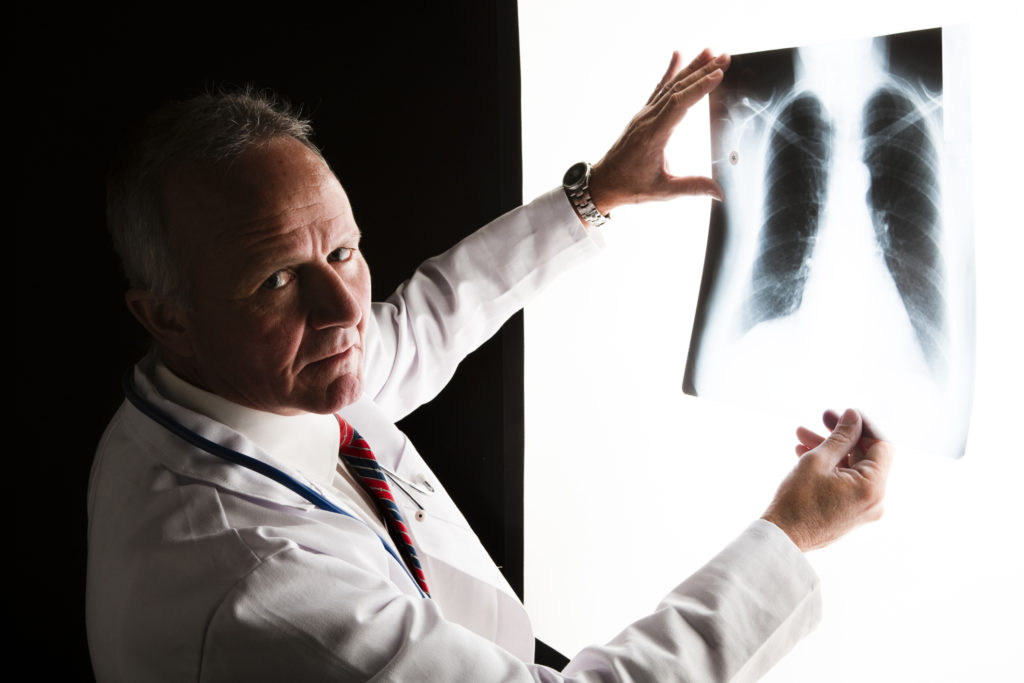Despite being a common type of cancer, lung cancer often goes unchecked until the stages are advanced and it becomes too late for treatment.
Those who are diagnosed with lung cancer often need painful and expensive treatment so that they may fight against the illness. A cancer diagnosis often will not only have physiological effects, but also psychological effects. A fatal cancer diagnosis can bring great stress and depression.
Understanding the variations of lung cancer, its causes, symptoms and treatments available is essential after a diagnosis.
What is Lung Cancer?
Lung cancer is defined by the erratic growth of atypical cells that takes place in one or both the lungs.
These growing atypical cells can begin to enter and coat the air pathways in your chest. The cancerous cells grow at an increased rate and tumors begin to develop. Benign tumors are harmless, while malignant tumors have the ability to spread to different locations within the body.
There are two categories of lung cancer, primary or secondary. Cancer that originates from the lungs themselves is considered primary, while cancer that originates from other system within the body is considered secondary. The American Cancer Society reports that out of all reported cancer diagnoses during a year in the U.S, 14% of these diagnoses include lung cancer. 1,370,000 of yearly reported death in the U.S are caused by lung cancer.
Causes
When a healthy cell contains a mutation that prevents it from dying, lung cancer occurs. This mutation can be caused by a variety of possibilities. The most common cause is the effect of inhaling carcinogens.
Lung cancers are mainly caused by smoking or extreme exposure to secondary smoke. Carcinogens are also present within asbestos, exhaust fumes, arsenic, radiation, gamma rays and UV rays. Having a genetic predisposition for cancer will also increase the possibility of a lung cancer diagnosis.
Symptoms
The signs and symptoms of cancer are an essential piece of information to those individuals who have an increased risk factor for cancer.
The following are the most notable symptoms of lung cancer:
- Persistent cough – either dry or containing bodily fluids
- Chest and/or rib pain
- Increased difficulty breathing
- Fatigue
- Weakness
- Sudden weight loss
- Swollen lymph nodes
Seeing your doctor after noting any of these symptoms can help the lung cancer be identified before it reaches its later stages.
Treatment
Treatment available for lung cancer varies upon its exact type and the stage the cancer is in.
With small-cell lung cancer, the most common treatments include chemotherapy or radiation treatment. With non-small lung cancer, surgery may be an option in addition to chemotherapy or radiation. Different treatments will lead to different outcomes. More treatment options include:
- Targeted drug therapy
- Intravenous chemotherapy or chemotherapy medication
- Radiation
- Combination of any of the previously mentioned
Alternative Treatments
The side effects for the treatment of cancer are often severe. Chemotherapy and radiation can cause nausea and inflammatory responses in the airways or lungs.
Symptoms of cancer can be relieved using alternative medicine. Ginger is an excellent root used for relieving feelings of nausea. Vitamin D can improve bone health for individuals who smoke.
Alternative medicine attempts to target the cancer as well as alleviate symptoms and boost the immune system. Some alternative therapies include:
- A healthy well-balanced diet with vitamins
- Immunotherapy
- Enzyme therapy for detoxifications
- Oxygen therapy
- Meditation
- Exercise
When discussing treatment planning with your doctor or oncologist, it is important to consider the relief that may be brought by the usage of alternative medicine.
Prognosis
According to the American Cancer Society, the prognosis of lung cancer varies with the type and stage at which the cancer is identified. Those diagnosed with small-cell cancer report the following statistics:
- Stage I – 31% five-year survival rate
- Stage II – 19% five-year survival rate
- Stage III – 8% five-year survival rate
- Stage IV – 2% five-year survival rate
The prognosis for non-small lung cancer is usually less fatal. Those diagnosed with non-small cancer report the following statistics:
- Stage I – 77-92% five-year survival rate
- Stage IB – 68% five-year survival rate
- Stage IIA – 60%V five-year survival rate
- Stage IIB – 53% five-year survival rate
- Stage IIIA – 36% five-year survival rate
- Stage IIIB – 26% five-year survival rate
- Stage IIIC – 13% five-year survival rate
- Stage IVA – 10% five-year survival rate
- Stage IVB – 1% five-year survival rate
New treatments for cancer are becoming available every day. Researchers continue to investigate drug combinations to better treat and prevent the growth of cancer cells.
In Conclusion
It is important to get screened for lung cancer early if you notice that your body is beginning to show any early warning signs. This is especially true if you have a history of smoking or exposure to carcinogens. Treatments are available and these treatments are more effective when the disease it discovered early.

